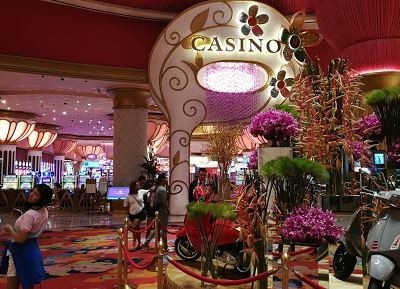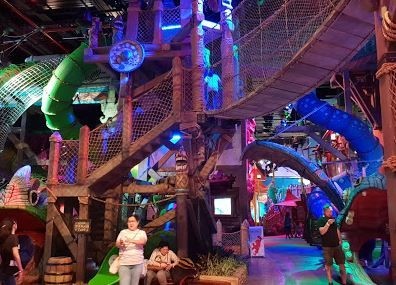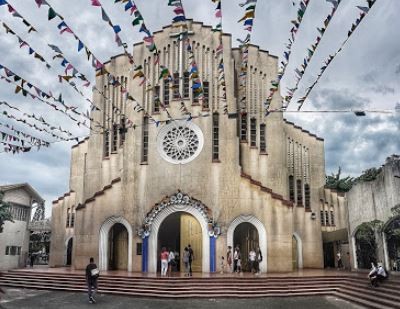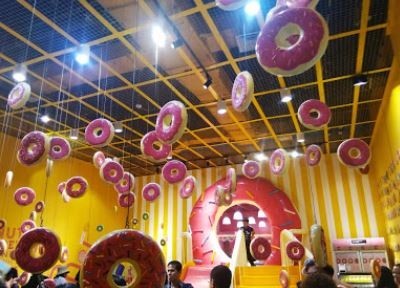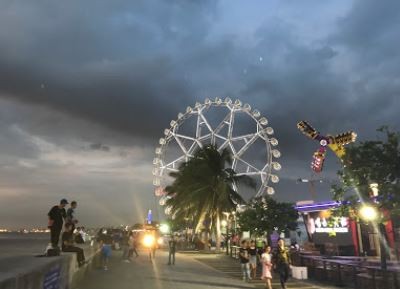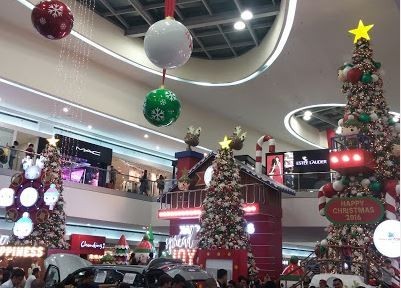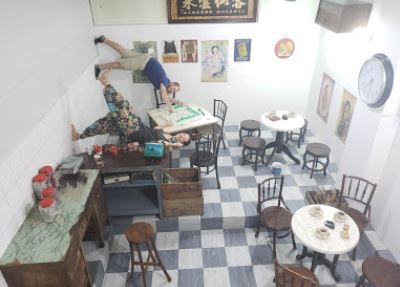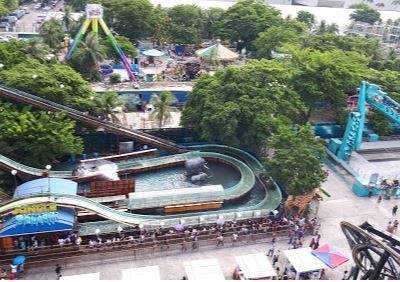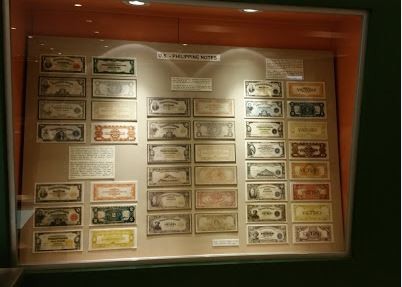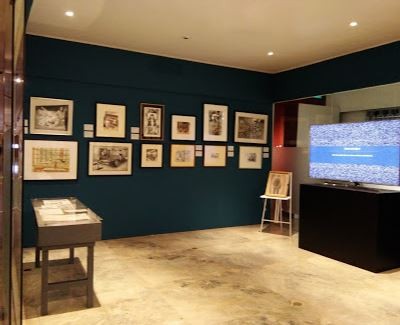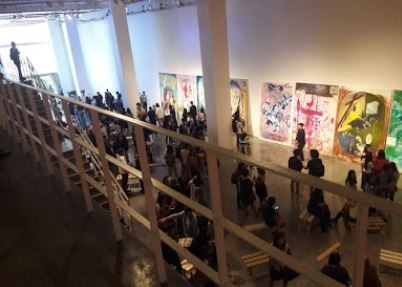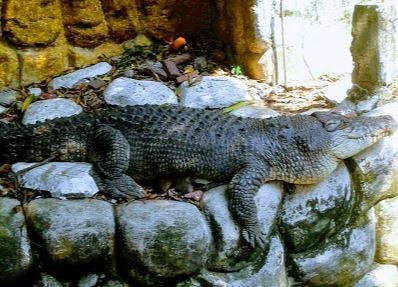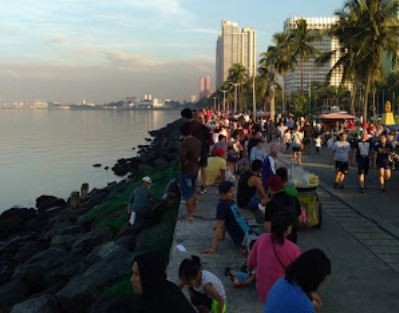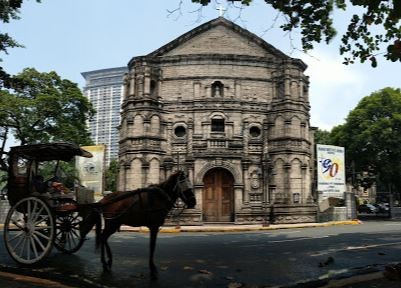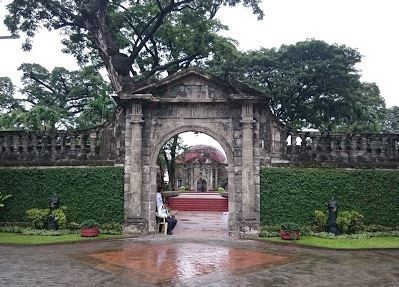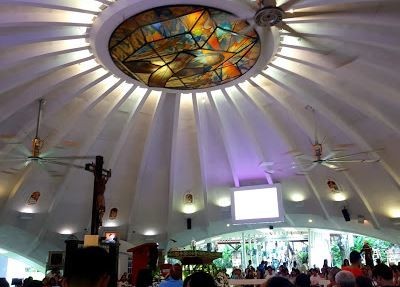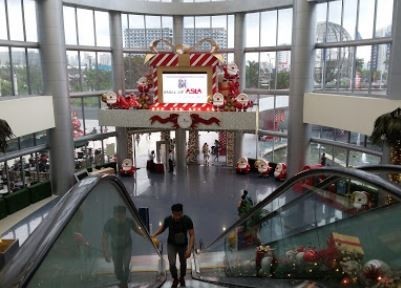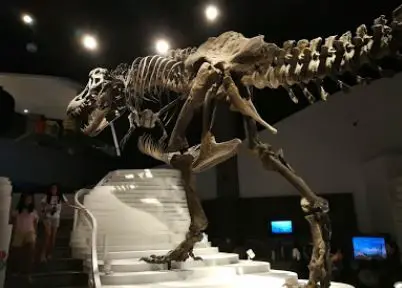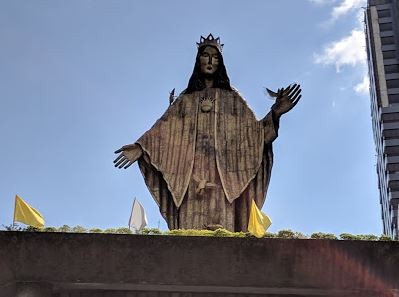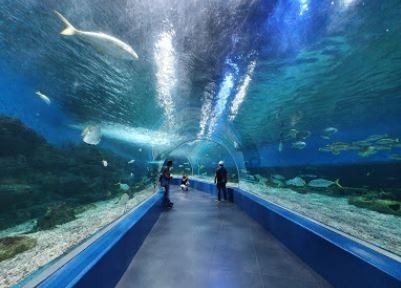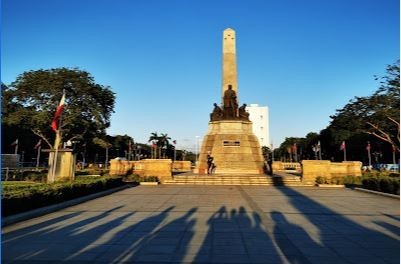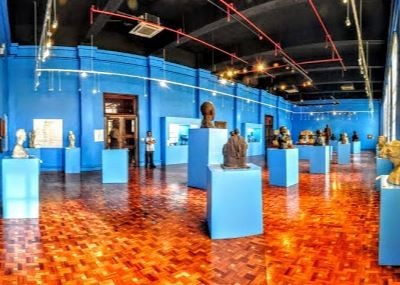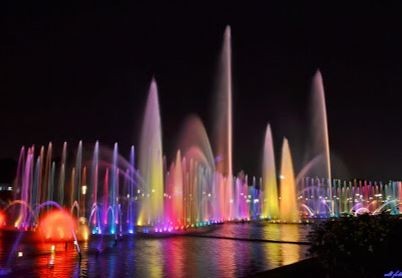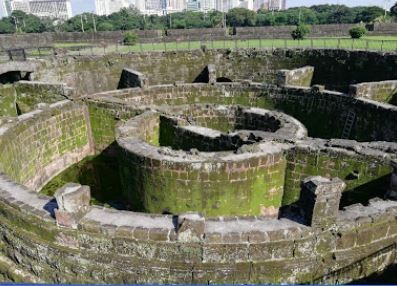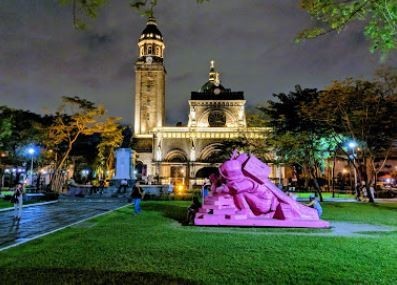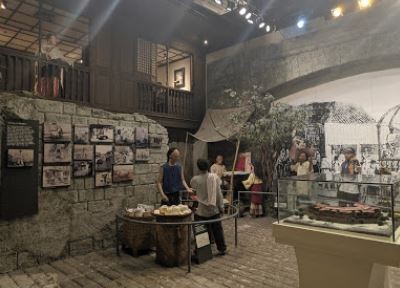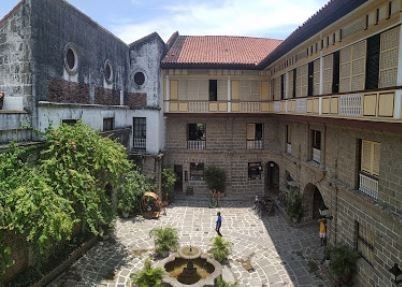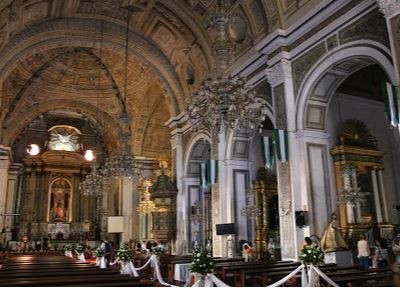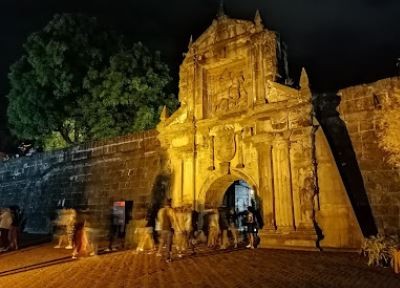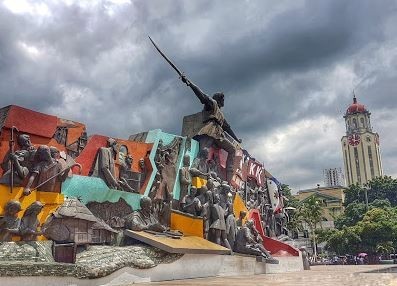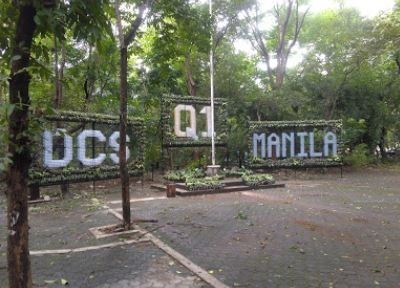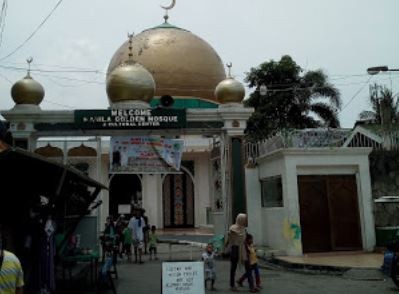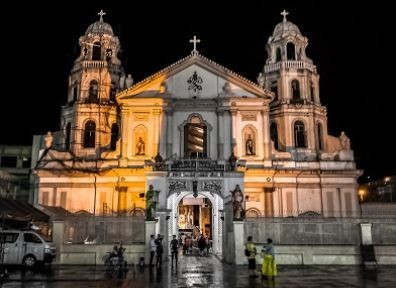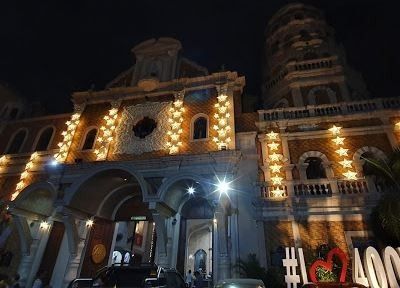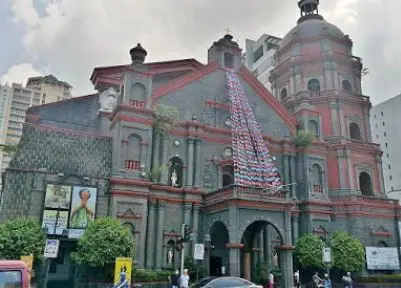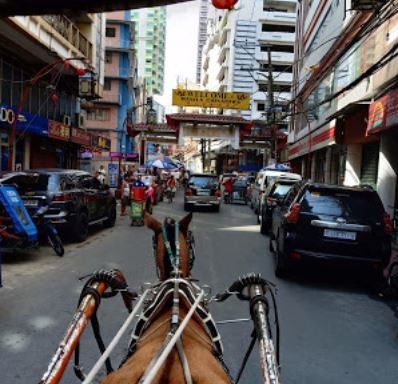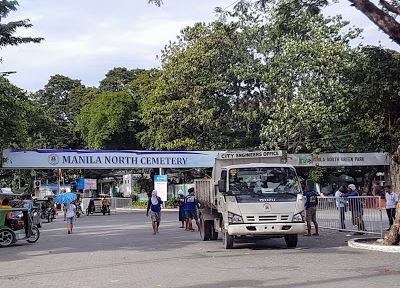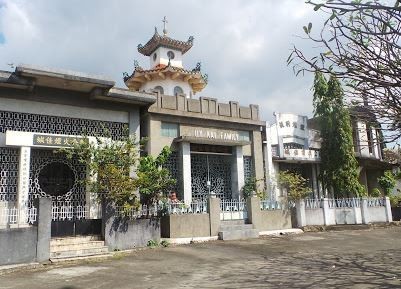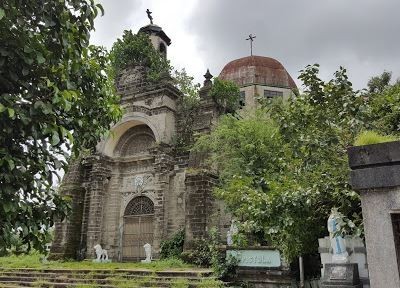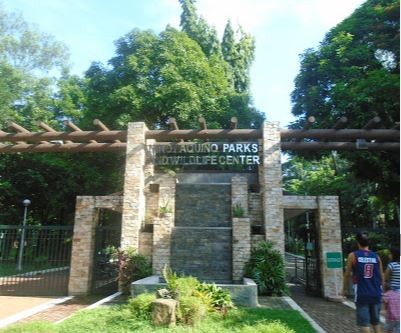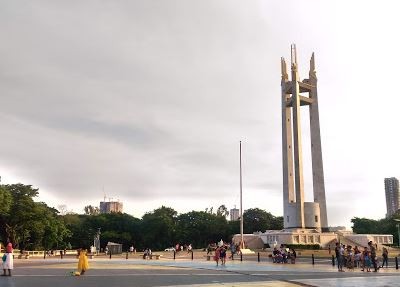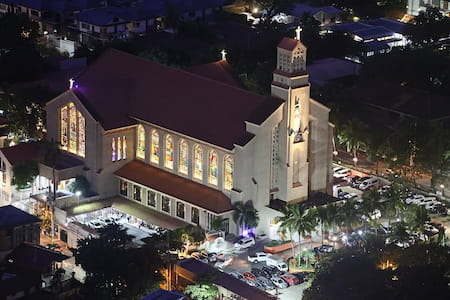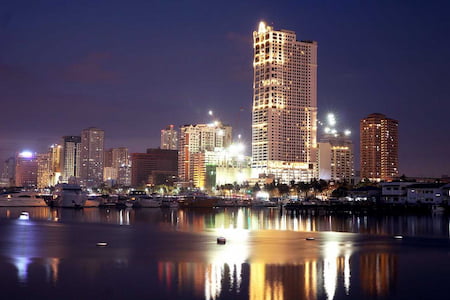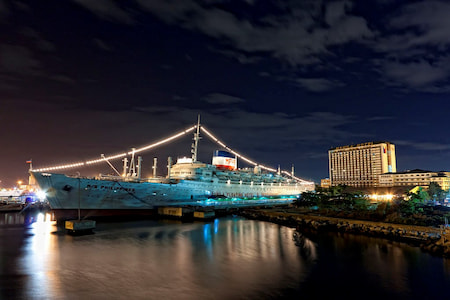BEST THINGS TO DO IN MANILA
Since Metropolitan Manila is the main gateway to many destinations in the Philippines, the city registering more than 8 million foreign arrivals in 2019, according to the Department of Tourism (DOT). There are bunch of best things to do & see in Manila as it contains many notable attractions including a UNESCO World Heritage Site and landmarks of cultural heritage.
Manila is also the Philippines’ primary shopping hub and is one of the Asia-Pacific region’s well-known shopping destinations. Many shopping centres around the metropolis are located and are usually clustered in major shopping districts. Let us explore & discover all the best things to do in Manila here.
35 Best Things To Do in Manila
Table of Contents
Toggle01 Okada Manila
Okada Manila, is within 5 km West of Ninoy Aquino International Airport. This is a luxury casino resort and hotel complex located on the Entertainment City or E-City, a gaming and entertainment complex under development by PAGCOR spanning over an area of 8 km2. This is not just a casino resort, they have wellness center that offers luxury spa services, the world largest multicolor dancing fountain, indoor facility for the learning-oriented entertainment of children & teens, shopping mall & much more.
02 DreamPlay
DreamPlay by DreamWorks offers a one-of-a-kind entertainment for the whole family. This is the world’s first DreamWorks-themed, indoor interactive play, learn and creativity center for children. There are 12 attractions with 3 themed party rooms in approximately 5,000 square metres of space, for a total capacity of 120 people. Among the activities and fun experiences including “Kung Fu Panda,” “Shrek,” “Madagascar“, “How to Train Your Dragon” etc. – Best things to do in Manila for children.
03 National Shrine of Our Mother of Perpetual Help (Baclaran Church)
The National Shrine of Our Mother of Perpetual Help, also known as the Redemptorist Church and Baclaran Church, is a famous national shrine on Roxas Boulevard in Baclaran, dedicated to Our Lady of Perpetual Help. The church enshrines the image of Our Mother of Perpetual Help, and is one of the Philippines’ largest Marian churches. Among Filipino Catholics, devotion to Our Mother of Perpetual Help is common and has given rise to the throngs of devotees who flood the church every Wednesday to attend Mass and pray to Our Mother of Perpetual Help for the Novena.
04 The Dessert Museum
The Dessert Museum isn’t a real museum. It is an interactive art show of dessert-themed art pieces and installations, described as a cross between a museum, a theme park and a candy store. The museum first opened its doors in February 2018 and is the first exhibit of its kind in Asia. A treat bigger than life installations, a delicious tasting of exclusive and enhanced desserts and a brand new Instagram album will be included for visitors to this 12,000 square-foot confectionery paradise.
05 SM by the Bay Amusement Park
SM by the Bay is an amusement park and seaside promenade in Pasay City, Manila. This amusement park provides all types of fun and safe rides for all ages such as Rocking Tag, Bumble Bee, Bumper Car, Road Trains, Barn Stormer, and the MOA Eye. Never miss this MOE Eye giant ferries wheel as after the London Eye, this is one of the biggest ferris wheels in the world, it is the biggest and tallest ferris wheel in the Philippines. – Best thing to do in Manila with family.
06 SM Mall of Asia
SM Mall of Asia was the largest shopping mall in the Philippines when it opened in 2006. Presently, it is the fourth largest shopping mall in the Philippines and the fourteenth in the world. It has a land area of 67 hectares (170 acres), a gross floor area of approximately 432,891 m2 and offers 46,647 m2 for conventions and social functions. Besides branded shops and restaurants, it also offers world-class movie theatres and Olympic-sized ice skating rink. – Best thing to do in Manila for ice-skaters.
07 Upside Down Museum
Upside Down Museum is the one & only museum of its kind in the Philippines which opened in 2016 and the initial inspiration for Manila’s version came from upside down houses in America and Malaysia. It is a museum of optical art with upside-down structures with personalized illusions of 3D art, original sculptures and 3D pictures. A great place for groups of children, friends and families, is a breeding ground for creativity and human relations. – Best thing to do in Manila for Instagram session.
08 Star City
Star City, is the only all-weather, air-conditioned amusement park in the Philippines. Established in 1991, for people of all ages, it offers more than 30 different rides and attractions. It was established in 1991 on a reclaimed area of the Cultural Center of the Philippines Complex, part of Bay City. Annually, more than 1.5 million tourists visited the park owing to its spectacular fun activities offered such as Egyptian Spinning Coaster, Art Alive Museum, Tornado, Bump Car Smash, Mini Pirate Ship and many more.
09 Central Bank Money Museum
Central Bank Money Museum is a very informative numismatic museum with an excellent chronology of Philippines money. Also known as “Museo ng Bangko Sentral ng Pilipinas”, the museum was established in 1974 and showcases the Central Bank’s collection of coins, paper notes, medals, artifacts and monetary items found in the Philippines during different historical periods. Also on display are paintings and artifacts complementing the collection.
10 Metropolitan Museum of Manila
Metropolitan Museum of Manila is located in the Bangko Sentral ng Pilipinas (BSP) complex along Roxas Boulevard in the Malate district, it is one of the major museums in the region. The museum, founded in 1976, initially exhibited foreign artists to introduce contemporary artistic works from other cultures to Filipinos. By 1986, by providing bilingual exhibition texts and establishing many outreach educational initiatives such as seminars and symposia, its emphasis shifted to local works and expanded its scope to more popular individuals, thus fostering local pride and identity.
11 Museum of Contemporary Art and Design (MCAD)
Located within the artistic community of the De La Salle College of Saint Benilde’s School of Design and Arts, the Museum of Contemporary Art and Design (MCAD) is a unique institution that provides contemporary art and its various audiences with insight & visibility, with an emphasis on the context of Manila, Philippines. The programmes of MCAD are moulded in line with the courses of the school: film, fashion design, animation, multimedia, photography, architecture, as well as production of music.
12 Spa & Massage
13 Manila Zoo
Manila Zoo, formally known as the Manila Zoological and Botanical Garden occupying a total area of about 14-acres was opened to public in July 1959. It is home to about a thousand animals from over 90 species & the most famous resident is Mali, an Asian elephant who arrived at the zoo in 1977 as a 3-year-old trans calf brought from Sri Lanka after being abandoned by her herd and rescued from the jungle by the pinnawala elephant orphanage. The zoo is now undergoing reconstruction and re-open by next year 2021.
14 Manila Baywalk
Manila Baywalk is a coconut-lined pedestrian walkway along Roxas Boulevard, a seaside promenade overlooking Manila Bay. In the evening, this 2 km bay walk is a popular venue with alfresco cafés that serve local cuisine while visitors can sit back & view the stunning sunset in Manila. Many of the outlets here often feature music and performances by live bands. Local performers visit the region and it is often possible to find free mime, acrobatics, and other art performances along the strip. One of the best things to do in Manila during evening.
15 Our Lady of Remedies Parish
Our Lady of Remedies Parish or Malate Church is one of the oldest churches in the city of Manila. The church was first built in 1588 and was dedicated to Nuestra Señora de los Remedios. The stone church and convent was ruined badly during the earthquake of 1645 and both structures were destroyed in 1667. The 2nd church & convent were rebuilt later that year and again destroyed by the typhoon in 1868. The present church was then rebuilt for the third time and was completed three decades later, from 1894 to 1898.
16 Paco Park and Cemetery
Paco Park and Cemetery was built in 1807 by the Dominicans during the Spanish colonial period and was once Manila’s municipal cemetery, it is now a recreational garden. The circular shape cemetery was primarily built as a municipal cemetery for the affluent and established aristocratic Spanish families who resided during the Spanish colonial period in old Manila, or the town within the walls of Intramuros. It was then expanded to about 4,500 square yards in 1859, enclosing the original plan with another circular outer wall.
17 Greenbelt Chapel @ Greenbelt Park
Greenbelt Chapel (Santo Niño de la Paz Chapel) is located in the Greenbelt Park. The church is popular with church-goers, but most individuals find it calming because of the park surrounding it. Coming here helps one to connect closely with nature and experience its silence and beauty up and near. The area is surrounded by dense lush greenery, fish and lily pond accompanied by little vivid waterfalls and fountains. This is probably the most relaxing chapel in the Philippines.
18 Greenbelt Mall
Greenbelt is a shopping mall with about total area of 2,700,000 sq ft located at Ayala Center, a major commercial development in the Makati Central Business District. The complex of five contemporary buildings (Greenbelt 1, 2, 3, 4 & 5) has its own style of architecture and features offer a mix of high-end retail shops, restaurants, amenities, leisure and entertainment. Exclusive brands like Hermes, Calvin Klein, Kate Spade, Kenneth Cole, Marks and Spencer & Lacoste can be found in this mall.
19 The Mind Museum
The Mind Museum is the first ever world-class interactive science museum in the Philippines, nestled on a 3.0 acres lot in the J. Y. Campos Park in Bonifacio Global City, a business district of the city. The museum has five main galleries that occupy an exhibition area of 4,900 square metres (53,000 sq ft) and cover 2 floors. Each gallery had its own theme, namely, atom, life, planet, universe and technology connected by “Nature’s Webways” characteristics. – Best thing to do in Taguig, Manila with kids.
20 EDSA Shrine
EDSA Shrine or is also called the Archdiocesan Shrine of Mary, Queen of Peace or Mary, Queen of Peace Quasi-Parish, although these names are seldom used. The church was built in 1989 and a local Filipino architect Francisco Mañosa was responsible for the architectural and structural design of the EDSA Shrine. The construction of the EDSA Shrine consisted of a promenade, the People’s Plaza, whose focal point was a statue of the Virgin Mary sculpted by Virginia Ty-Navarro, and an underground church inspired by the Cathedral of Brasilia.
21 Manila Ocean Park
Manila Ocean Park is the first oceanarium theme park in Philippines designed with marine life on display and considerable infotainment. Manila Ocean Park’s main attraction is the oceanarium, which houses 14,000 sea creatures, many of which are endemic to Southeast Asia, out of around 277 species. There are seven sections in the oceanarium and it holds 3,000 cubic metres of sea water. After a 55-meter walkthrough inside the oceanarium, there is an amazing 25 metre 220 ° curved walkway tunnel.
22 Rizal Park
Rizal Park is recognized as one of the largest urban parks in Asia, covering an area of 140 acres. This is a historic urban park and commonly known as Luneta Park. The history of Rizal Park began in 1820, when, under Spanish rule, the Paseo de Luneta was completed just south of the walls of Manila on a marshy patch of land next to the ocean.
The park is divided into three sections:
Northeastern Section: This 40-acre section is designated as the National Museum Complex which includes the Agrifina Circle, and where the National Museum of Natural History and the National Museum of Anthropology are located.
Not to miss the another 2 nearby museum: National Museum of the Philippines & National Museum of Fine Arts.
Central Section: A proper 54-acre park that stretches down to Roxas Boulevard. This is where the Rizal Monument and other attractions are located, such as the Open-Air Auditorium, the Flagpole of Freedom, the Central Musical and the Dancing Fountain.
Southwestern Section: Includes the Burnham Green, a 10-hectare (25-acre) open field, the Quirino Grandstand and the Manila Ocean Park along Manila Bay.
23 Intramuros
Intramuros (Latin: within the walls) a walled area of 0.67 square kilometers is the historic centre and oldest district of Manila. Intramuros was Manila from the city’s establishment in 1571 to the end of Spanish rule in 1898. Intramuros contains some of the city’s most interesting museums, ruins, and churches.
Among the attractions in this area are such as Baluarte de San Diego (a bastion), Intramuros and Rizal Bagumbayan Light and Sound Museum, San Agustin Church, Manila Cathedral (the most important church in the country), Casa Manila (a museum), Bahay Tsinoy (a Chinese museum), Fort Santiago (a defense fortress) & Rizal Shrine (a museum dedicated to the lifework of José Rizal).
24 The Bonifacio and the Katipunan Revolution Monument
The Bonifacio and the Katipunan Revolution Monument, located in the grounds of the Bonifacio Shrine and designed by Eduardo Castrillo, a Filipino sculptor, it was unveiled in 1998. It is a public park and plaza with A musical dancing fountain right in front of the shrine monument. This monument is dedicated in memory of Andres Bonifacio, the Filipino revolutionary, and the role of Katipunan in the Philippine Revolution. This is a must visit venue and one of the best things to do in manila.
25 Arroceros Forest Park
Manila City Mayor has recently signed an ordinance declaring the Arroceros Forest Park as a “permanent forest park“. Even though is small in size (5.4-acre), it is one of the few green parcels left in the bustling Philippines capital & and has been called “Manila’s last lung”, being the city’s only nature park. More than 3,500 trees, including 60 native species, are housed in the park and act as a rest stop for migratory birds. – Best thing to do in Manila for bird watching.
26 Manila Golden Mosque And Cultural Center
Manila Golden Mosque also known as Masjid Al-Dahab is considered the largest mosque in Metro Manila. For its gold-painted dome topped with a crescent moon as well as for its position in Globo de Oro Street, the Golden Mosque obtained its name. Construction began on August 4, 1976, under the supervision of former Philippine First Lady Imelda Marcos, for the purpose of the visit of President Muammar al-Gaddafi of Libya, although his visit was cancelled. – Best thing to do in Manila for Muslim.
27 Minor Basilica of the Black Nazarene
Minor Basilica of the Black Nazarene or known canonically as Quiapo Church is one the most famous churches in the district of Quiapo in the city of Manila. The venerated statue of Jesus Christ, known as the Black Nazarene and hence the official name, Minor Basilica of the Black Nazarene, is housed in this Roman Catholic church. The church and the statue of the Black Nazarene were destroyed several times due to fires, earthquakes and war. It was then reconstructed in 1994 and reconsecrated to devotees.
28 Santa Cruz Parish
Santa Cruz Parish is a Roman Catholic parish church in the district of Santa Cruz, Manila. It was founded when the Jesuits created the arrabal (suburb) of Santa Cruz in the early 17th century. With the last renovation completed in the 1950s, the church had undergone a number of repairs and restoration. With Ionic piers vertically separating the first two levels into three parts, the church facade is characteristically Baroque. The church’s main entrance is formed by three semicircular arch doorways.
29 Binondo Church
Binondo Church or Minor Basilica and National Shrine of Saint Lorenzo Ruiz was founded by Dominican priests in 1596 to serve their Chinese converts to Christianity located in the District of Binondo, Manila. It is one of the oldest places of Christian worship in the Philippines. However, the original building was destroyed in 1762 by British bombardment and ew granite church was rebuilt on the same site in 1852. Anyway, it was greatly damaged again during the Second World War.
30 Chinatown – Binondo
In Manila, Binondo is a district and is recognised as the Chinatown of the region. It is one of the oldest Chinatowns in the world and was the country’s center of commerce during the American occupation. In 1584, Spanish Governor-General Luis Pérez Dasmariñas founded Binondo as a settlement for Chinese immigrants, with the intention of converting the Chinese to Catholicism at the instigation of the Spanish Dominican fathers. Therefore, the district is known as the birthplace of the Chinese Mestizos, including St. Lorenzo Ruiz, who became the first Filipino saint. – Best thing to do in Manila for authentic Chinese cuisine.
31 Manila North Cemetery
Manila North Cemetery also known as Cementerio del Norte by local is one of the largest (54 hectares) and oldest civil cemeteries in the city of Manila. Opened in 1904, this cemetery is home to an estimated one million of the dead and presently it is the home to impoverished families with a population of easily more than 10,000 Filipinos. Unbelievably, some of them even stay or run businesses inside a family mausoleum. Some of the former Philippines’ Presidents & celebrities are also buried here.
32 Manila Chinese Cemetery
Manila Chinese Cemetery built in 1878 is the second oldest cemetery in Manila after La Loma Cemetery. It was designated as the resting place for the wealthy Chinese, who during the Spanish colonial era were refused burial in Catholic cemeteries. It was described as “The Beverly Hills of the dead” by UK Daily Mail as many of these tombs are larger than most houses and are equipped with kitchens, air-conditioning and bedrooms. The cemetery was witness to many executions during World War II.
33 La Loma Cemetery
La Loma Cemetery or Campo Santo de La Loma (formerly known as Cementerio de Binondo) is the oldest Catholic cemetery in Manila that was opened in 1884. With total area of slightly less than 54 hectares, is one of the few places that escaped destruction in the 1945 Battle of Manila during the Second World War, where most of the heritage architectural array of the city was lost. The whole cemetery was used by the Japanese as army base during the Second World War.
34 Ninoy Aquino Parks and Wildlife Center
Ninoy Aquino Parks and Wildlife Center is a zoological and botanical garden with total area of about 56-acre located in Quezon City. Within the grounds of the park, a manmade lagoon is located which hosts various fish, including catfish, tilapia, and snakehead. Within the immediate vicinity of the lagoon, other facilities can also be located. This includes: the Fishing Village, which consists of five houses on stilts located on water along the edge of the lagoon and is modelled after structures often seen in Mindanao fishing villages and an open-air amphitheatre of 500-600 capacity.
35 Quezon Memorial Circle
Quezon Memorial Circle is a national park is located inside a large traffic circle in the shape of an ellipse and bounded by the Elliptical Road and is the main park of Quezon City. This park is home to many important monuments, landmarks, museums and gardens, including the a 66-metre tall mausoleum containing President Manuel L Quezon ‘s remains, reminding tourists of the rich history of the region. Significant improvements have been made in the recent year in order to attract both local and international visitors.


